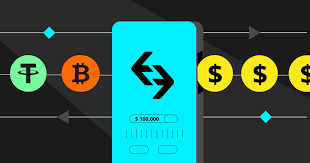Cryptocurrency loans have become a popular option for investors looking to access liquidity without selling their assets.
However, managing debt efficiently is crucial to avoid liquidation and financial strain. Whether you’ve borrowed against your crypto holdings for investment, business, or personal use, having a solid repayment strategy can help you stay on top of your obligations.
1. Understand Your Loan Terms
Before repaying a crypto loan, ensure you fully understand the loan agreement. Key factors to consider include:
- Interest Rate: Crypto loan rates can vary significantly, so knowing your interest charges is crucial.
- Loan-to-Value (LTV) Ratio: The higher your LTV, the more risk you have of liquidation if the market fluctuates.
- Repayment Schedule: Some loans have flexible repayment options, while others require fixed payments.
- Collateral Requirements: Understand what happens if the value of your collateral drops and whether you need to top up your holdings.
2. Prioritize High-Interest Debt
If you have multiple loans, start by repaying the one with the highest interest rate first. This approach, known as the avalanche method, minimizes the total amount of interest paid over time.
Alternatively, if you prefer a psychological boost, you can use the snowball method—paying off smaller debts first to gain momentum.
3. Monitor Market Conditions
Since crypto loans are backed by volatile assets, market movements can affect your repayment strategy. Consider the following:
- If your collateral increases in value, you may qualify for lower interest rates or be able to refinance.
- If the market drops, you might need to repay part of the loan quickly to avoid liquidation.
4. Refinance or Restructure Your Loan
Some crypto lenders allow refinancing, which can help you:
- Lower your interest rate.
- Extend your loan term for lower monthly payments.
- Switch to a different lender with better terms.
Refinancing works best when crypto prices are stable or rising.
5. Automate Repayments
To avoid missing deadlines and accumulating penalties, set up automatic repayments. This ensures you stay on track and maintain a good credit reputation with lenders.
6. Earn Passive Income to Offset Debt
If you hold crypto assets, you can generate passive income through:
- Staking (earning rewards for holding certain cryptocurrencies).
- Yield farming (lending your crypto to earn interest).
- Liquidity provision (participating in decentralized exchanges).
Earnings from these methods can help you cover loan repayments without selling your assets.
7. Make Extra Payments When Possible
If you come across extra funds—whether from trading profits, business income, or salary—consider making additional payments. This reduces your debt faster and lowers the overall interest paid.
8. Have an Emergency Plan
Market crashes can trigger liquidations if you’re not prepared. To safeguard your assets:
- Keep a separate emergency fund in stablecoins or fiat.
- Set stop-loss levels on leveraged trades.
- Diversify your portfolio to reduce risk exposure.
Final Thoughts
Managing crypto loan repayments efficiently requires careful planning and monitoring. By understanding your loan terms, prioritizing repayments, and leveraging income-generating strategies, you can reduce debt stress while protecting your crypto holdings.
Always stay informed about market trends and have a backup plan in place to navigate volatility successfully.
Join Gen z and millennials TaskForce official 2025 WhatsApp Channel To Stay Updated On time the ongoing situation https://whatsapp.com/channel/0029VaWT5gSGufImU8R0DO30


